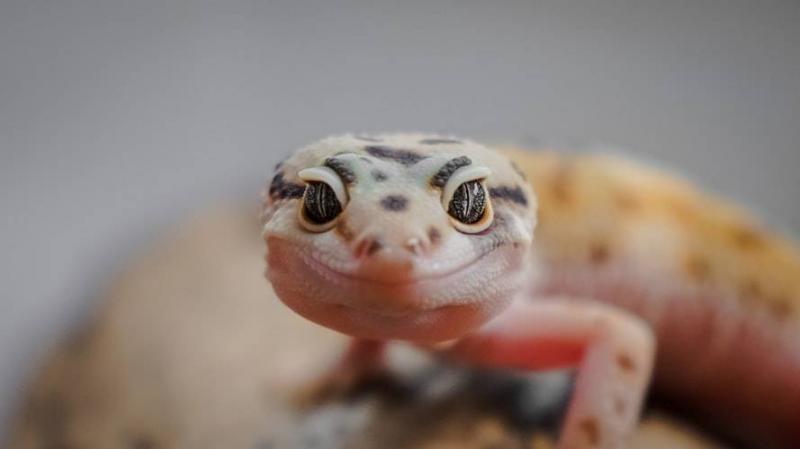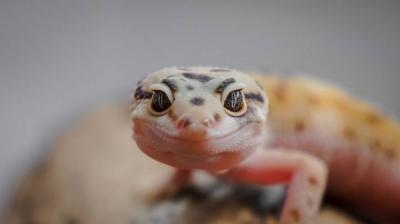Medicine and scientists are striving to develop innovative treatments for cancer. In this context, a new scientific study published through the specialized website "Popular Science" revealed that a number of small, lemon-colored pet lizards could be a reason for treating many skin cancer patients. The study explained that scientists discovered a link between these small house lizards, known as "geckos," and the nature of skin cancer, which could be a key to treating and preventing this deadly disease.
Longua Guo, a geneticist at the University of California, stated that they found that approximately 80% of house geckos continue to develop iris tumors, significantly indicating the nature of skin cancer in humans. Guo and his colleagues identified the gene likely responsible for the well-known lemon color of the gecko, which causes them to develop cancerous tumors—potentially representing a crucial entry point in discovering the gene responsible for skin cancer in humans.
Experts identified the nature of skin color in geckos using "melanophore" cell technology that produces melanin, which causes the appearance of cancerous tumors, and from this, they discovered the gene responsible for the tumors.
To find the gene or genes responsible for the skin coloring of the gecko, Guo collaborated with Leonid Kruglyak, a professor of biochemistry and genetics, to analyze a record provided by reptile breeders that included information about the characteristics of all geckos in their colonies and how they are interconnected.
Using this record, researchers identified a pattern of inheritance, finding that some geckos had few spots on their backs and yellow legs, while in others, the yellow color extended to their heads and tails, indicating tumor development that thickens the skin. There was also a final group of geckos with standard tiger skin spots and dark yellow skin surrounding them. These patterns reveal features and types of tumors, which can all likely be attributed to a single mutated gene. This mutated gene drives the development of these color spots, resembling the spread of cancerous tumors in humans.
The scientists categorized these three groups of geckos and then sequenced their DNA, comparing it to search for a gene matching the expected pattern of inheritance. Indeed, the scientists identified a suspected region of the tiger-spotted gecko's genome and created a genetic database to compare genetic sequences with other well-assigned animal genomes. Through comparisons with chickens, green lizards, and humans, scientists extracted a new gene called "SBI NT1," which mutates in the body and leads to the emergence of tumors that cause skin cancer.
The scientists later confirmed the responsibility of the "SBI NT1" gene in the development of melanoma tumors, considered one of the deadliest forms of human skin cancer.
A Magical Key
Karrie Swail, a geneticist at the University of Massachusetts specializing in cancer studies, said that this study is a true magical key to completely eradicate skin cancer. He clarified that the next step should involve crafting a genetically modified gene linked to the discovered gene in the gecko, aiming to reverse the transformation process occurring in the skin that causes tumor emergence and monitor the impact of the genetically modified gene on tumor growth to correct the existing mutation in this gene.
Researchers say that it is challenging to test this new gene on geckos, so it may be tested on other animals to study its efficacy before beginning clinical testing on humans. Doug Minck, an evolutionary geneticist at the University of Georgia, noted that the choice of geckos itself is a groundbreaking thought, as they are not among the typical animals used in studying genetic factors, which could be very promising for eradicating skin cancer.
Minck emphasizes that studying a diverse range of model organisms is important for making comparisons between many other genes of different animals, allowing the study to be comprehensive and enabling its application to humans later on.




